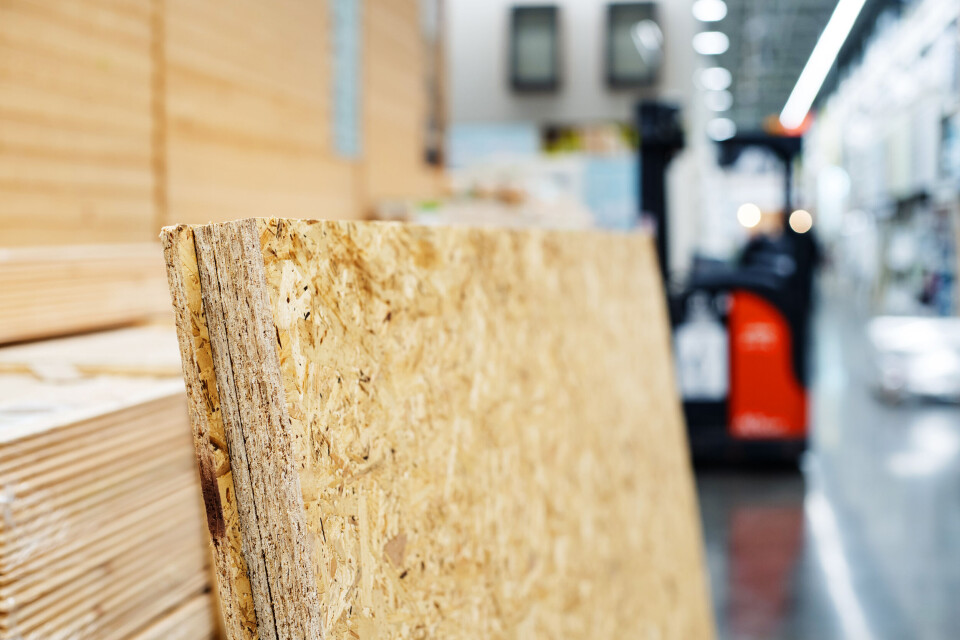-
Restoring a 400-year-old French property: an Englishman's award-winning journey
How Ron Alldridge, a retired Englishman, transformed a derelict 400-year-old house in Var into an award-winning masterpiece, blending history with craftsmanship
-
How to set up a fuse box in a French home
Columnist Nick Inman charts the ups and downs of renovating an old French farmhouse
-
When should you avoid doing DIY in France
Columnist Nick Inman helps you decide when to contact - and to wait for - a professional
DIY: Buying wood board for French property renovation can be minefield
Writer Nick Inman explains how he has learned to navigate bewildering builders’ merchants and what you need to ask for

Before going shopping for DIY materials, I take my measurements, do my research and make sure I know the correct French vocabulary.
Then I find myself at the counter of the builder’s merchants with a queue of impatient professional roofers behind me and discover that what I wanted is too expensive, isn’t sold any more, or is only available in sizes that force me to recalculate everything.
Read also: Leroy Merlin voted France’s favourite DIY shop: do you agree?
I have to translate the new information in my head and make some swift choices.
This happens mainly when I am buying manufactured wood boards (panneaux bois), which is frequently because they are a staple of DIY.
Wine press project
For instance, I recently wanted to make a piece of removable flooring to fit around the wine press at the end of our barn. I would have liked to have done it in solid pine planks but settled for sturdy chipboard to save money.
The lady at the counter ran the figures and I could only splutter. It was a lot more than I had expected to pay.
“Is there an alternative?” I asked. “Well, you could try…”
The roofers were getting irritated by this foreigner who didn’t know what he wanted so I jotted down some prices and went down to the wood yard to see what was what.
There I flagged down a forklift driver and asked him to talk through the various alternatives.
Thicker is not always stronger
Generally, the thicker the board, the stronger it is – but also the more expensive.
However, things are not always that simple. Some materials are stronger in their thinner sizes than other materials in their thicker forms.
The question is, how many millimetres of the cheapest material are the minimum to serve for the job in hand?
Other considerations
There are other decisions to be made at the same time. Do the boards need to join together with tongues and grooves (for strength), for example? These dalles de plancher are more expensive than flat edges.
And will the board be exposed to damp? Chipboard famously goes soggy if it gets too wet and when you put your foot through it after the roof springs a leak, you will wish you had bought something else.
Finally, there is transport. Will a pile of 2.4 metre panels fit comfortably on top of the car or is it better to buy pre-cut?
I dithered a long while over what material to use for the wine press. The forklift driver spoke to me in that slow, exaggerated way some people use for communicating with foreigners but I got the information and I made my choice.
The cheapest option I could get away with was 13mm OSB (oriented strand board).
I bought two sheets, took them home on the roof rack, cut them to size with a circular saw and fitted them around the press. Good enough for my purposes.
Know your stuff
1. Hardboard (masonite to Americans) is panneau de fibres de bois. It is 3mm thick and not for structural purposes.
2. OSB, which looks like and is mashed-up wood, is a good alternative to chipboard. The name is the same in French but pronounced with the appropriate mouth-wiggling accent: oh-ese-be. Typical sizes are 9-18mm.
3. Chipboard is aggloméré (shortened to agglo) and typically comes in sizes starting at 10mm, but it needs to be 19mm at least to take the weight of a human being.
4. MDF (same name, but say the letters in French: em day ef) is typically available in 3-18mm.
5. Plywood (contreplaqué) is more expensive than chipboard or OSB but you get a better trade- off between thickness and strength – and it looks good.
Related articles
French farmhouse DIY on a budget: Quick bathroom makeover ideas
DIY: Upcycling pallets keeps costs down on French farmhouse renovation
French renovation: family DIY project saves money on garden gates
























